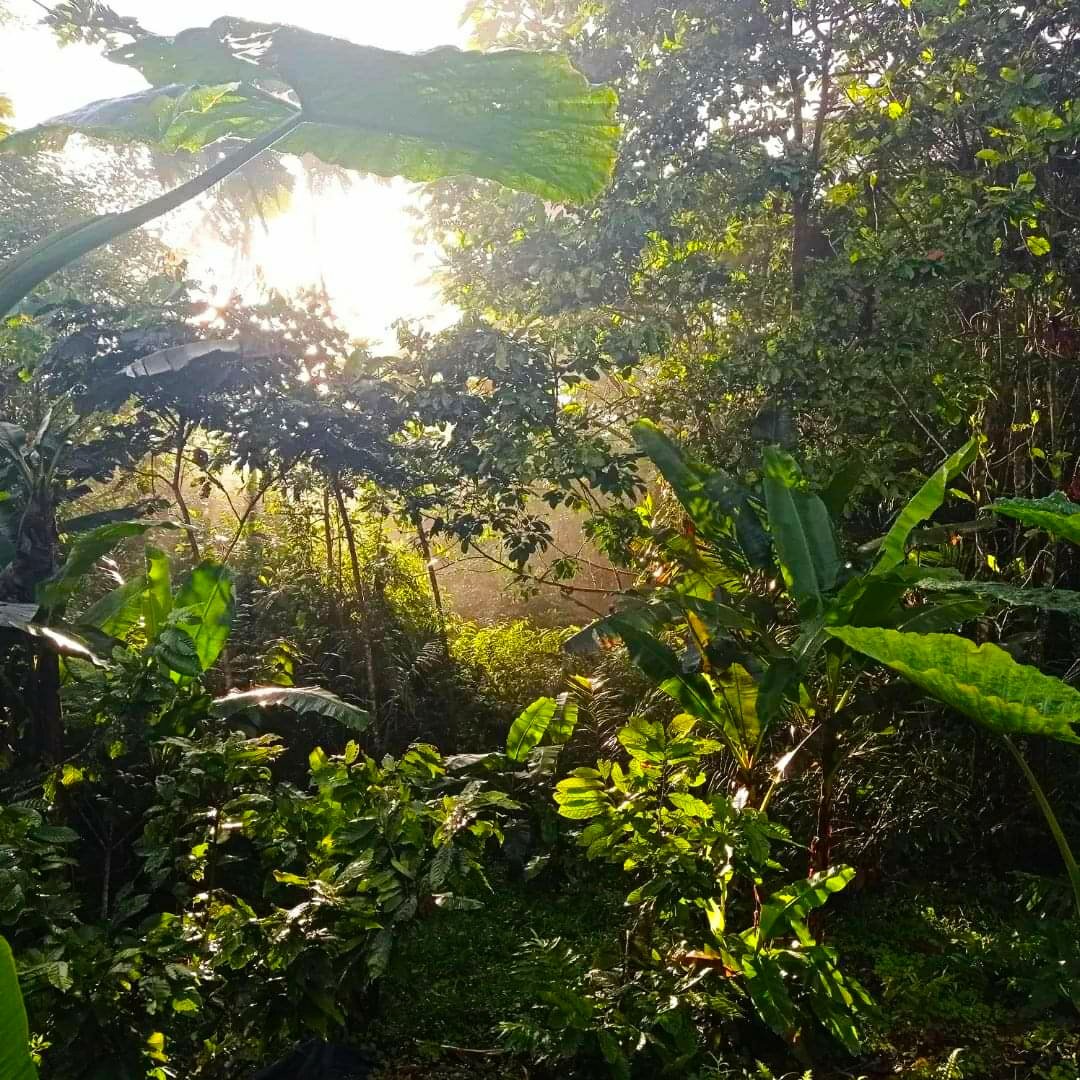
We grow food using agroforestry.
Agroforestry comes from two words:
Agro means agriculture or farming. Forestry means in a forest.
Industrial agriculture cuts forests down to plant rows of crops. Instead, we plant forests of diverse plants that produce food, spices, medicine plants, and edible seeds.
Since 2016, we have cultivated over 8,000 trees and plants of 150+ varieties. And completely transformed a logged and barren cow pasture into a lush growing forest.
THIS is why we say that we REGENERATE land…
May 2016
May 2022

We restore vitality and biodiversity to degraded land in the Chocó Andino Cloud Forest.
The Chocó Andino de Pichincha Biosphere, a UNESCO and WWF biodiversity hotspot, is a critical resource that is highly threatened by industrial farming, conversion to pasture, logging, and mining.
Deforestation is a major cause of climate change events like floods, droughts, and extreme temperatures. By designing and planting food gardens that mimic a natural forest, we show it's possible to feed people without deforestation.
People need the forest.
The forest provides clean water, clean air, food staples, medicine and hydroelectric power to over six million people.
The forest is home to wildlife.
This high-altitude rainforest is the second most biodiverse place on earth. The forest is home to 35 percent of the world's wildlife species including 10,000 species of plants, 270 mammals, 210 reptiles, 200 birds, and 130 amphibians.
Most unique about the Chocó Andino is the high amount of endemic biodiversity. 50% of the life forms in the Choco do not exist anywhere else on earth.
Our planet depends on the forest.
Each hectare of mature forest is capable of storing up to 250 tons carbon from the atmosphere, the main driver of climate change. This equals nearly a million pounds of coal burned.
Despite the benefits that the Choco forest creates for people, it is one of the most threatened places in the world. Sixty-one percent (4.4 million acres) of the Chocó Andino in Ecuador has been degraded by logging, mining, and conversion to pasture or monoculture farms.
Driven by our first-hand experience of just how badly damaged the land was, we explored regenerative agriculture as means to restore health to the ecosystem while providing for our needs.
By designing and planting multilayered gardens that mimic a natural forest, we show it's possible to feed people and produce essentials like textile fibers and building material without deforestation — a true nature-based practice.
Agroforestry promotes health and wealth.
Farms need to produce three things in order to provide health and wealth: food to live (calories), food to thrive (diversity and nutrient density), and food to sell (income). By giving equal consideration to each of these needs, our agroforestry systems promote food sovereignty and agrobiodiversity.
To ensure our food sovereignty, we continuously plant common tropical staple crops like cassava, sweet potato, taro, banana, and plantain for reliable sources of energy.
To preserve and promote the agrobiodiversity of the Chocó, we also cultivate underutilized and highly nutritious foods and medicinal herbs like breadnut, peach palm, cacao, and turmeric, all of which contribute significantly to a healthy diet by adding protein, healthy fats, and essential minerals.
To generate income we sell cacao, our main "cash crop." Cacao is usually sold to a middleman at a very low price, keeping farmers destitute. To break the vicious cycle, we train our farm assistants in value-add processing, sell our product as a finished good, and share the surplus.



